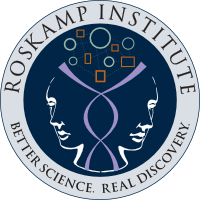For over two decades Roskamp Institute scientists have studied the causes and potential cures for neurological disorders such as Alzheimer’s Disease (AD), including the link between environmental agents and increased risk for AD and other brain conditions. So when legislation was passed, sponsored by Florida Rep. Vern Buchanan, to study the impact of Florida red tide, the Institute was uniquely qualified and positioned at ground zero to investigate its effects in our community. This week, Roskamp Institute scientists successfully competed for a peer-reviewed federal grant of over $400,000 from the National Institute of Environmental Health Sciences [NIEHS] to advance their work to study the potential effects of the Florida red tide neurotoxin, called brevetoxin, on brain health.
“Hopefully, our research will show that there is no link between the Florida red tide brevetoxin exposure and an increase of neurological disorders,” says Dr. Mike Mullan, one of the team leaders in the Florida red tide project and the Executive Director of the Roskamp Institute. “However, when you see metric tons of marine life being killed in a few weeks you realize how powerful the toxin is, and knowing that some of the effects of exposure can be long-lasting in other species, it makes sense to make sure that something similar is not happening in the human population – particularly in vulnerable populations.”
Project team leader Dr Laila Abdullah added that, “One critical observation is that brevetoxin does not affect everyone equally – some people are relatively unaffected by it, whereas others get severe symptoms very easily. We are very interested to know the reason for this and so we are examining the role of the immune system and looking at differences in neurological effects between those that have severe symptoms versus those that do not”.
The new funding will allow the Florida red tide team at Roskamp to continue the work already underway, examining the neurological effects of Florida red tide in a clinical study designed to determine whether exposure to brevetoxin can increase the incidence of neurological symptoms in susceptible individuals from the Sarasota area. Previous work, including by Dr. Barbara Kirkpatrick, who is a key team member in the present study, has suggested that this might be the case, as she and her colleagues recorded an excess of Emergency Room admissions for neurological complaints during the Florida red tide blooms occurring between the years 2005-2009.
ABOUT THE ROSKAMP INSTITUTE FLORIDA RED TIDE STUDY
The study calls for the recruitment of 400 volunteers in the Sarasota and Manatee counties, and requires 3 assessments where blood and urine samples are taken to measure brevetoxin and antibody levels. Volunteers will be seen during periods when no Florida red tide blooms are being observed and also during periods when they are. Comparing the levels of brevetoxin and antibodies with the levels of neurological complaints will shed light on whether Florida red tide brevetoxin exposure can trigger neurological conditions and whether immune responses are likely protective or make symptoms worse. As with other diseases studied at the Roskamp Institute, scientists and clinicians there are always looking for new ways to understand and treat neurological disorders.
ABOUT FLORIDA RED TIDE AND BREVETOXIN
Florida red tide is caused by an algae which blooms in the Gulf of Mexico, under certain environmental conditions, and releases a neurotoxin called brevetoxin. Other algae in Florida and elsewhere have been implicated in other brain disorders. During a severe bloom, brevetoxin causes the death of large numbers of fish and marine mammals such as dolphins and manatees. Although the exact cause of death in many affected species is unclear, much prior research suggests that brevetoxin can cause inflammation to many organs in the body.
